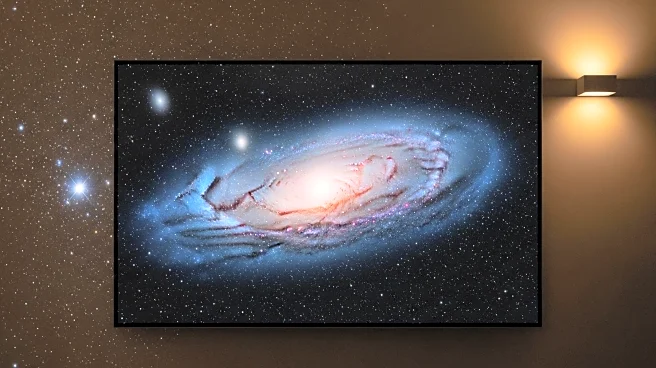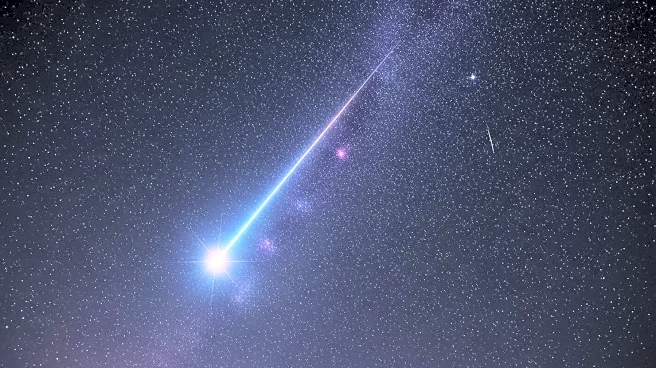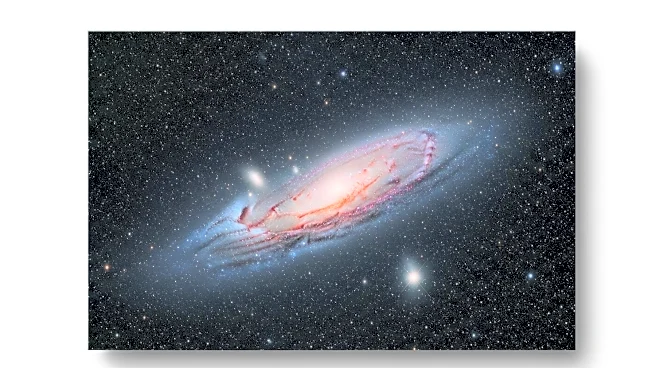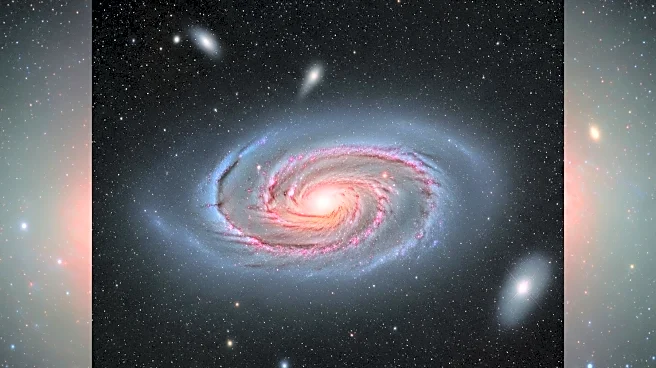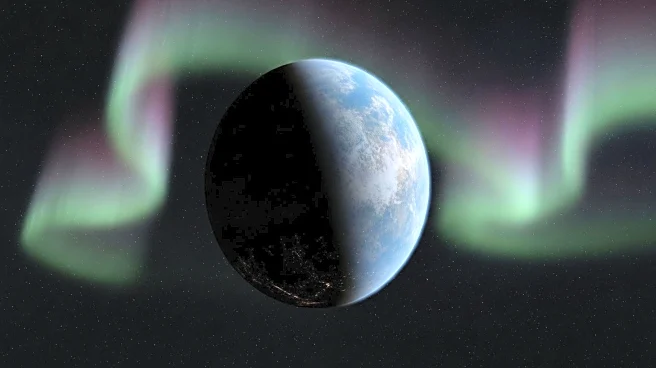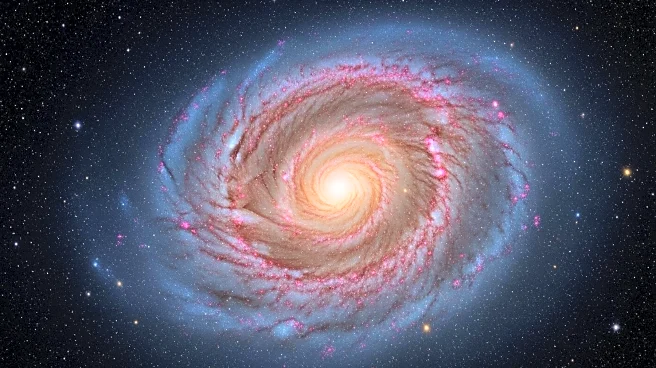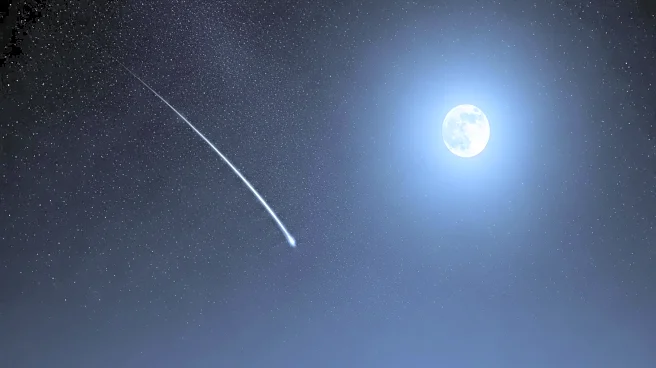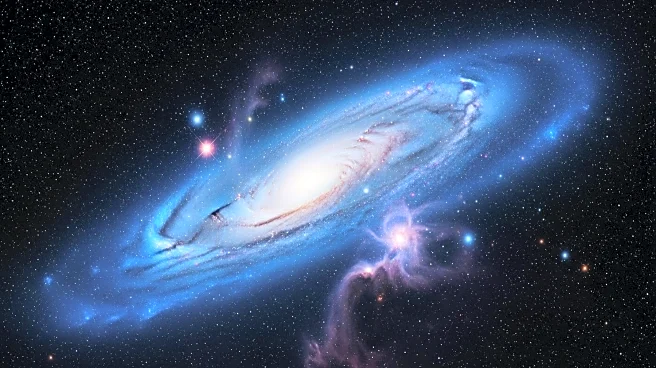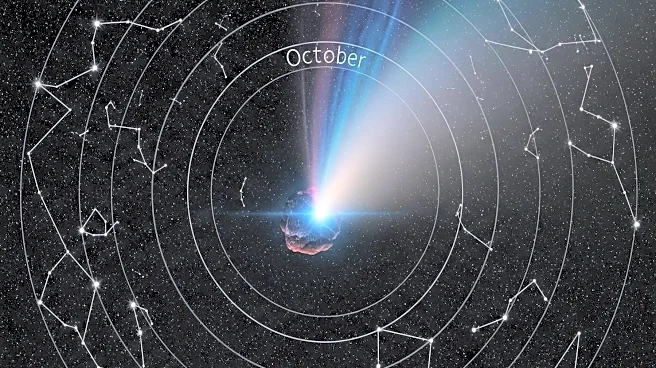What is the story about?
What's Happening?
Astrophotographer Ronald Brecher has captured a detailed image of the Andromeda Galaxy, located 2.5 million light-years from Earth. The photograph reveals the galaxy's spiral arms and dense dust lanes surrounding its center, which houses a supermassive black hole. The image also includes the nearby satellite galaxy M32 and the elliptical galaxy Messier 110. Brecher took the photograph over 38 hours using specialized equipment from his home in Guelph, Canada. The Andromeda Galaxy is visible in the night sky near the constellation Andromeda, offering a glimpse into ancient cosmic light.
Why It's Important?
Brecher's photograph of the Andromeda Galaxy provides valuable insights into the structure and composition of one of the closest spiral galaxies to the Milky Way. This detailed imagery aids astronomers in studying galaxy formation and evolution, contributing to our understanding of cosmic phenomena. The visibility of Andromeda in the night sky offers educational opportunities for amateur astronomers and the public to engage with space exploration. The image also highlights the capabilities of modern astrophotography in capturing distant celestial objects, advancing both scientific research and public interest in astronomy.
What's Next?
Astronomers will continue to study the Andromeda Galaxy to understand its dynamics and potential interactions with the Milky Way. The ongoing observation of Andromeda may lead to new discoveries about galaxy collisions and mergers. Brecher's work encourages other astrophotographers to capture and share images of celestial objects, fostering a community of space enthusiasts. As technology advances, more detailed and accessible images of distant galaxies will become available, enhancing public engagement with astronomy and inspiring future generations of scientists.
Beyond the Headlines
The study of the Andromeda Galaxy raises questions about the future of our own galaxy, as previous theories suggested a collision between Andromeda and the Milky Way. Recent research indicates uncertainty in this prediction, prompting further investigation into galactic interactions. The cultural impact of astrophotography is significant, as it bridges the gap between scientific research and public appreciation of the universe. Brecher's image serves as a reminder of humanity's curiosity and desire to explore the cosmos, fostering a sense of wonder and connection to the universe.
AI Generated Content
Do you find this article useful?
